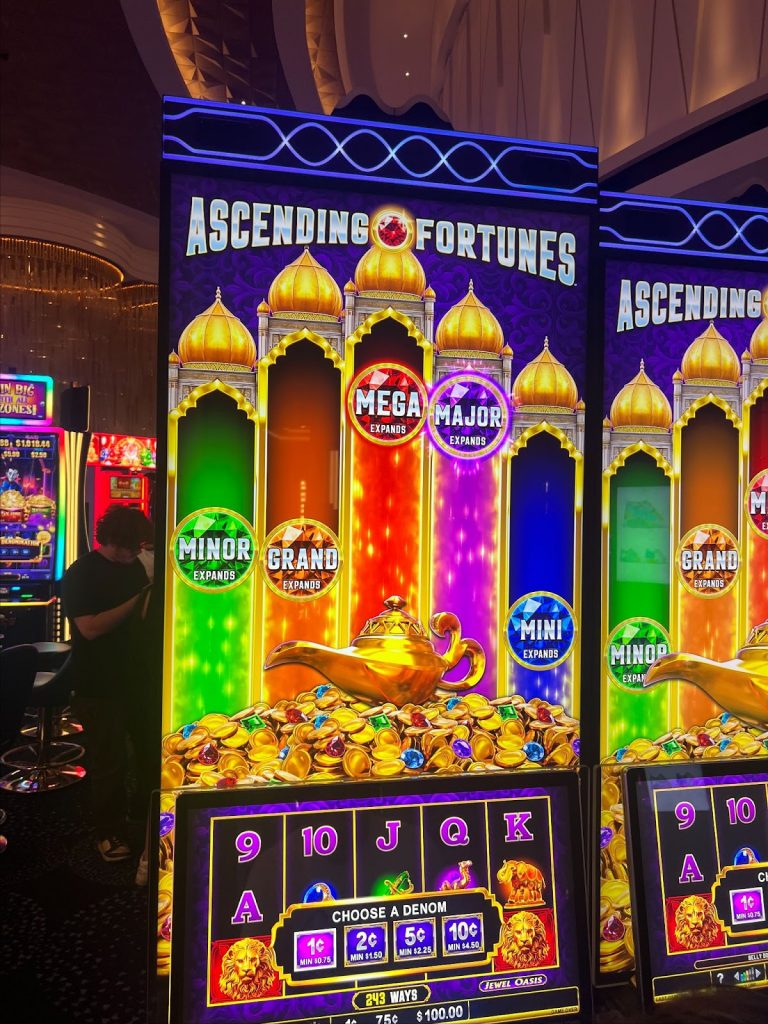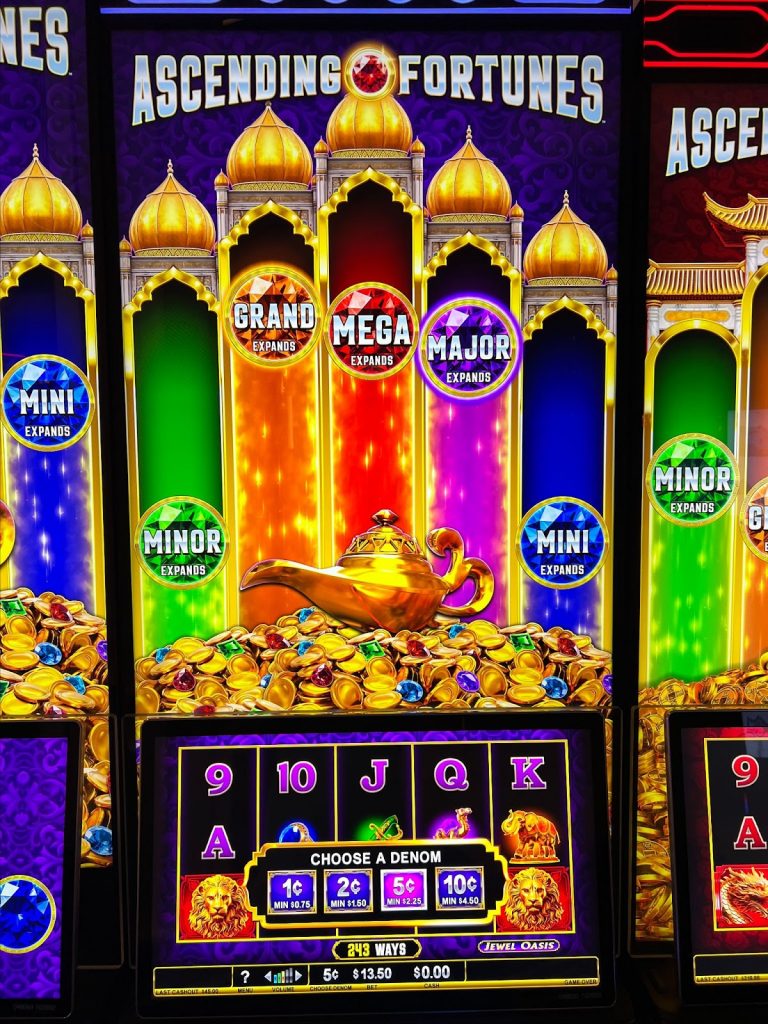Your cart is currently empty!
Stack Up Pays and Ascending Fortunes
Unnumbered Version
Similar Games:
Stack Up Pays and Ascending Fortunes
Risk Scale:
Orange/Red(sometimes can take hundreds of spins to finish)
Minimum Play:
Look only at the grand, mega, and major. If the “glow” is touching the very top of the meter, go ahead and play.
Other:
What at first seemed like a next-gen game with no advantage turned out to be anything but.
This may be a tricky one to explain, though the video will help. Unlike the original version of this game, which has clear must-hit points and starting numbers for each of the colors, this one does not. At first, I figured that meant this game offered no possible advantage. Not so fast! The colors do still increase along the same meter; it’s just that there are no numbers to indicate how close they are to hitting their must-hit points.
Without numbers, how would you know when to play? Here’s my “I’m confident yet I’m gonna sound ridiculous” answer: When the glow touches the top of the meter. I would not waste my money or time chasing the mini or minor, unless in rare combo situations, and would instead focus my attention on the major, grand, and mega.
You’re going to want to see something like this:

I’ll zoom in on the important part with the major in this case:

Notice how close that “glow” is to the very top of the meter. We know from the original version of this game, Ascending Fortunes, the must-hit points are as follows for blue, green, purple, orange, red: 125, 150, 200, 250, 350.
And my solo-chase points are as follows: 121 blue, 145 green, 192 purple, 240 orange, 325 red (some folks go a little lower on red). When the glow is touching the top like that, it’s often within five or so of reaching the must-hit point. Sometimes it may be one away, sometimes it may be eight away, but regardless, it will be close enough to be profitable long term.
There’s also a convenient shortcut on the bottom of the screen under each bet. It will show you if any are “close.” I put that in quotes, however, because they are almost always not actually close enough to play profitably, but at least you’ll be able to tell quickly if there are any purples, oranges, or reds worth investigating.
The bottom part of the screen looks like this:
So in this example, the $0.75 (purple), $1.50 (orange), $2.25 (purple), and $4.50 (orange) would be worth checking. The play in question ended up being the $0.75 purple, which turned out to be a 197/200 (see video at the end). In other words, a great find. As you’ll see in the video, I still ended up losing on the play, but if I can take only 197s for the rest of my life, I’d be a rich man.
But wait…how did I lose on a 197/200? This game is volatile, both in how long it takes to accumulate colors and in the payout range of the bonus once you hit your target. Over enough of a sample, however, this would be a rockstar find.
As you can see in the video, as you spin you’ll add to the tally of all the colors. That’s why you want to be as close as you can to the must-hit points or even more ideally have two or three colors in play as part of a combo chase.
One more thing: How about something like this?

You may be tempted by a possible red-orange-purple combo, as all three appear high up, but especially on the unnumbered version where it can be tricky to fully tell where everything is, I’d be careful when considering combo plays. I’d pass on this specific example, but combos are still worth considering on the unnumbered version, and it’s often going to be a case-by-case situation rather than one where I can give specific recommendations.
Here’s my video for this one:
